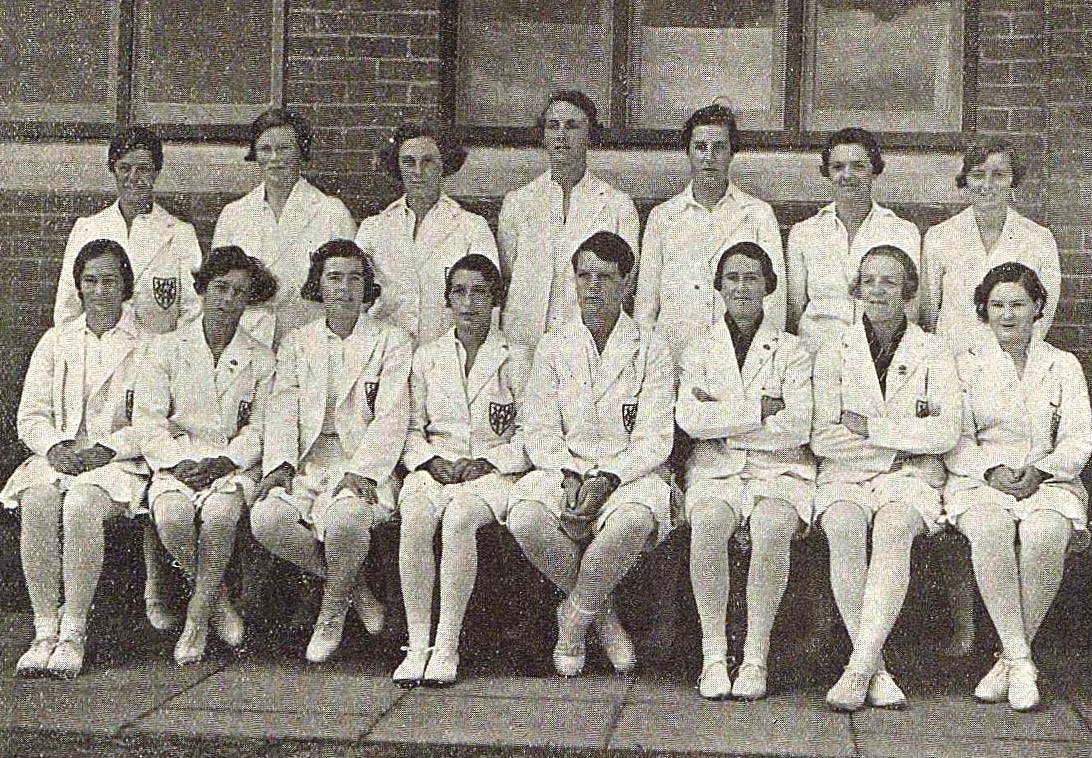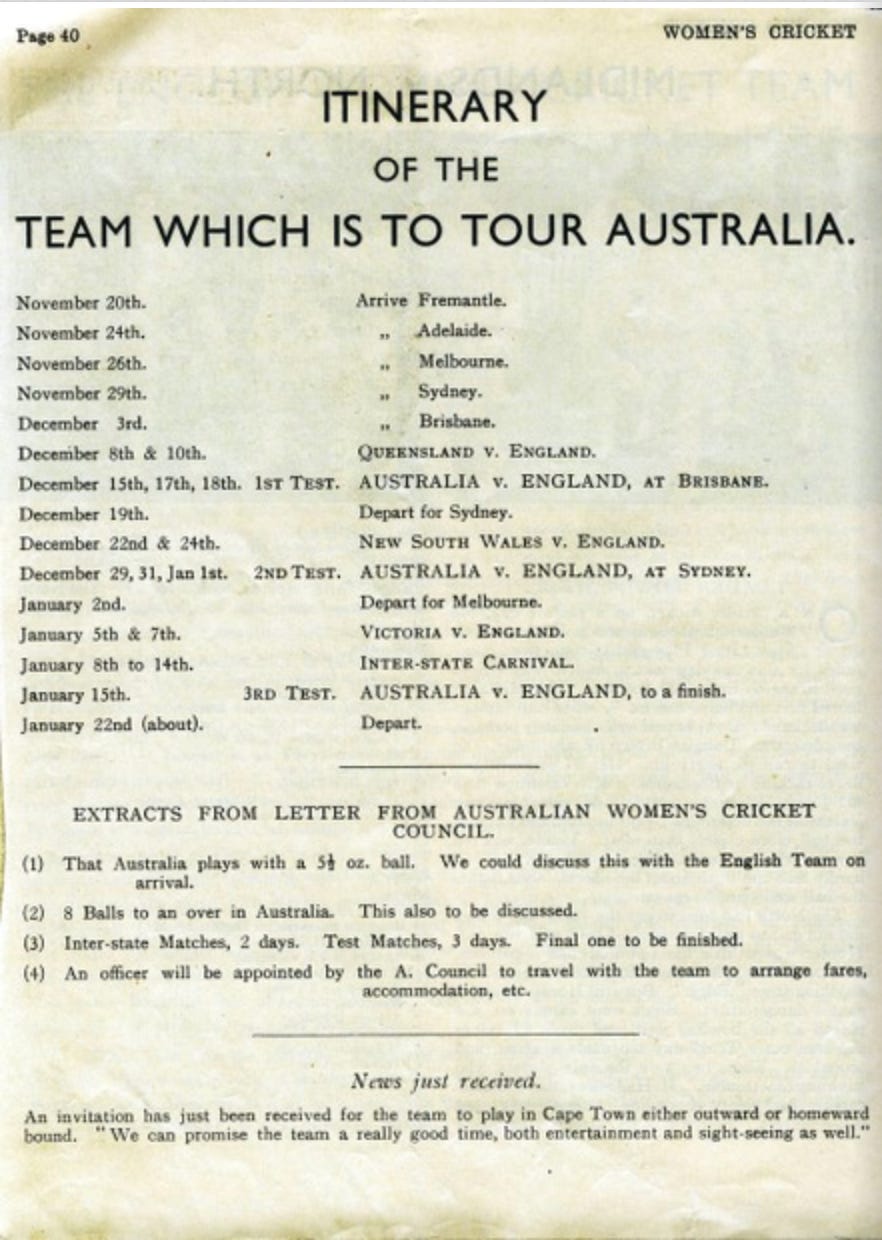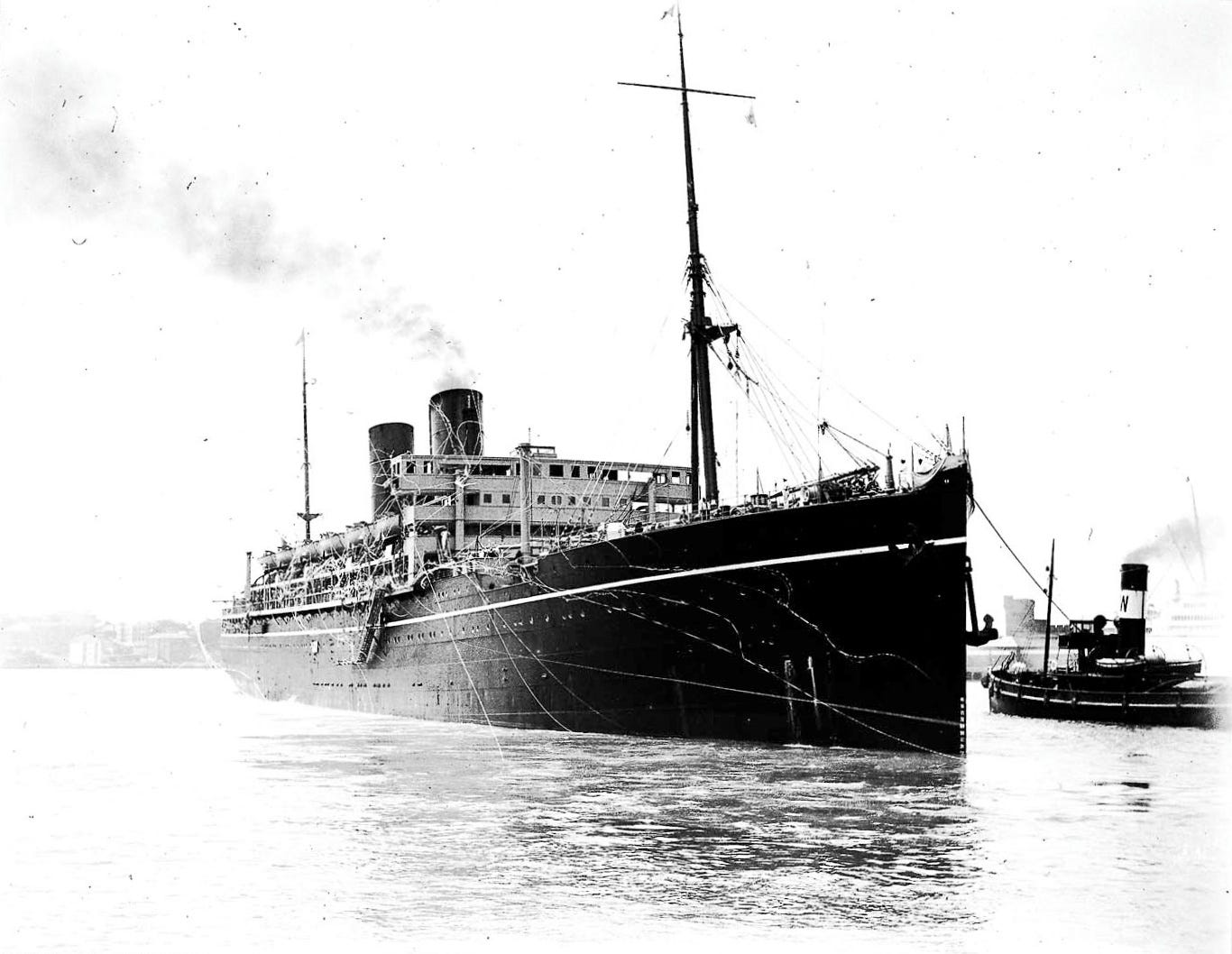History Makers: The 1934/35 England women's tour of Australia
The first installment in a new series
On December 28, 1934, the first Women’s Test Match between Australia and England commenced in Brisbane. This project, inspired by John Ward’s award-winning “100 Years Ago” series, will chronicle the tour as it unfolded. Throughout October and November, we will cover the events leading up to the tourists’ arrival in Fremantle in November 1934. Match reports from Australia and New Zealand will follow.
Members of the Talkin’ About Women’s Cricket Facebook group are assisting us, but we welcome contributions and suggestions from the broader cricket community. This project would not have been possible without the invaluable resources provided by the Women’s Cricket History and Women’s Cricket on the Web websites. A full list of references is available here.
Arranging the tour, selecting the squad, and playing conditions
In 1931, Vera Cox, Secretary of the Women’s Cricket Association (WCA), while holidaying in Australia, met Elsie Bennett of the YMCA in Melbourne to discuss the possibility of a cricket tour modelled on previous hockey tours. Regular discussions occurred until the WCA sent the Australian Women’s Cricket Council (AWCC) a formal invitation in early 1933. Two state organisations initially rejected the proposal on financial grounds, but momentum built in the press, suggesting the tour could help rebuild cricketing relations following the men’s 1932-33 bodyline tour, in which England bowled balls at the body to curtail the Australian batters. Would the women bowl bodyline? Marjorie Pollard (Secretary, WCA) put the situation in perspective: “We are not interested in silly bodyline or leg theory but would play cricket the way it should be played.” The AWCC formally invited the WCA, which was duly accepted. A cable from the New Zealand board confirmed the New Zealand leg in July.
Financial considerations were at the forefront from the start. Each player would have to pay her costs and be able to secure leave from work or other commitments; the tourists would leave in mid-October and not return until April 1935. Although the boat fare would be £80, each player should secure £100 to cover further expenses. From the moment they landed in Australia, they would be considered guests of the country.
Shortly after confirming the arrangements, the WCA sent a letter to prospective players. They ought to be at a good club standard, and must submit their applications by 21st April. The selection committee met in June to select fifteen from the 38 cricketers who had put their names forward for consideration. Nine would play in the England v. The Rest match at Old Trafford on 14th July, and thirteen in the eighth annual cricket week at the end of August.
The Sydney Telegraph reported that Betty Archdale thought the touring party would do well. She had some concerns but was confident of amicable resolutions about several outstanding issues, including start times, dress codes, and the size of the ball. She was looking forward to multi-day cricket, but felt Australia had a slight advantage, as they had played more two-day cricket. The 1932 England v. Scotland match had been the English women’s first and only two-day fixture. The Australian heat was also a concern. Archdale assured the press that the team usually scored its runs quickly, but would have to practice the staying game. She felt Maclagen would be the most valued member of the team, as she rarely got out.
On 18th October, the eve of departure, the team would gather at the Belgravia Hotel for an official dinner, before a reception at Caxton Hall. The following day, they would sail for Australia on the SS Cathay.
Brent Simmons is an ACS member with a growing interest in the history of the women’s game and the associate world. Although he lives in Japan, his heart is in Sussex.






